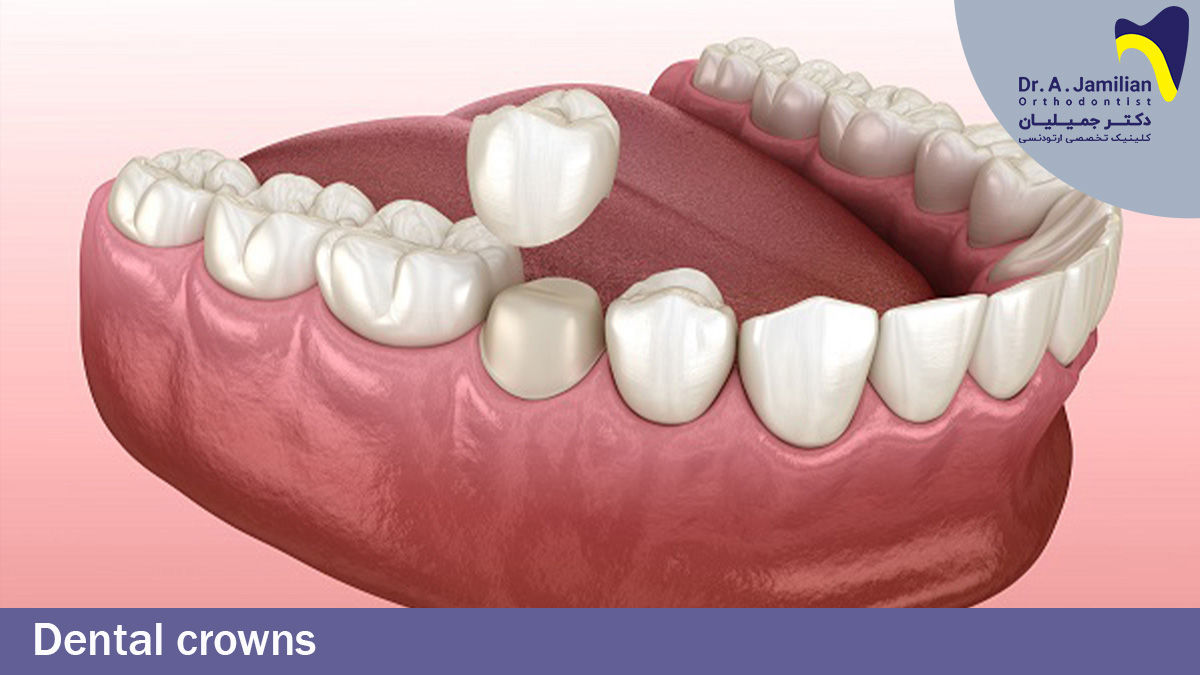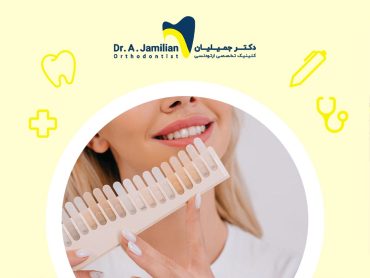A dental crown is a cover or cap that your dentist puts over a tooth in order to restore and recover it. A dental crown also restores the tooth to its normal shape, size, and function. A crown can make the tooth stronger or improve the way it looks. It also depends on such different factors as the teeth’s structure, the patients’ habits and the condition of teeth. About 1 to 1.5 mm of the tooth texture is scraped during the restoration process. It is very vital and essential to prevent it from re-decay. Dental crowns are used for restorative and cosmetic purposes.
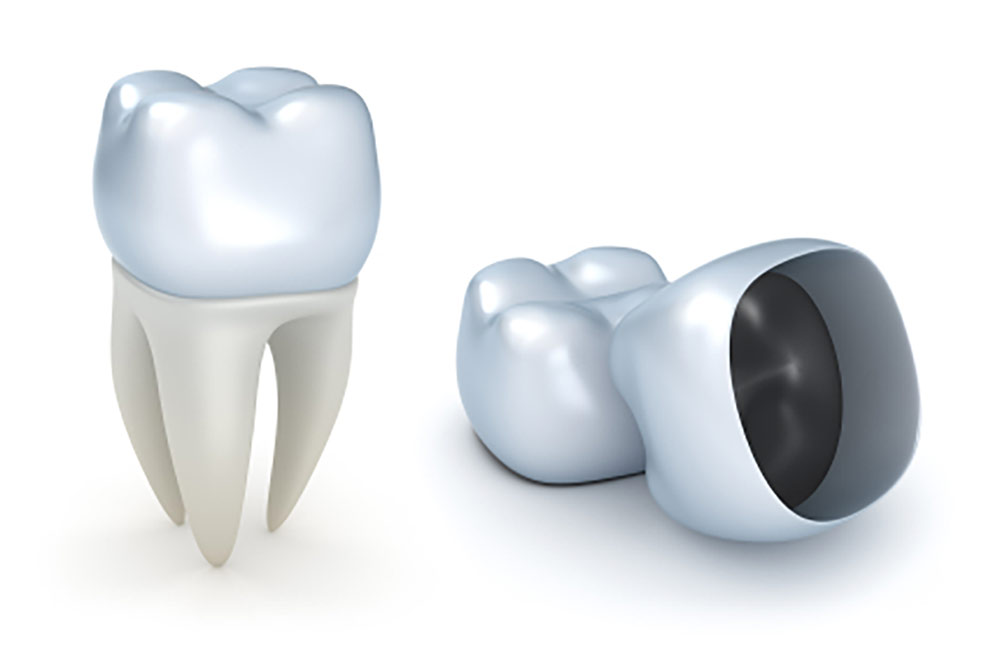
Who is the right candidate for dental crowns?
- There is a cavity in your teeth that is quite large for a filling.
- You have a tooth that is cracked, worn down, or weakened.
- You have had a root canal treatment; the crown will protect the restored tooth. The dentist’s judgment and diagnosis in covering the teeth with dental crowns after a root canal treatment is a very important issue.
- You want to cover a discolored or badly shaped tooth and improve your smile.
- Your tooth has been wrecked due to a decay.
Steps of placing a crown
Placing a crown on a natural tooth takes a number of steps:
Your dentist prepares the tooth by removing its outer portion so the crown will fit. Any tooth decay is also removed. If additional tooth structure is needed to support the crown, your dentist may build up the core of the tooth. It is a method through which the dentist applies suitable restorative materials in order to reconstruct the lost structure of the tooth so that the tooth is ready to be covered with a crown. This process will create a suitable foundation for the crown’s protection.
An appropriate impression is made for the patient from a mold or by digitally scanning the tooth.
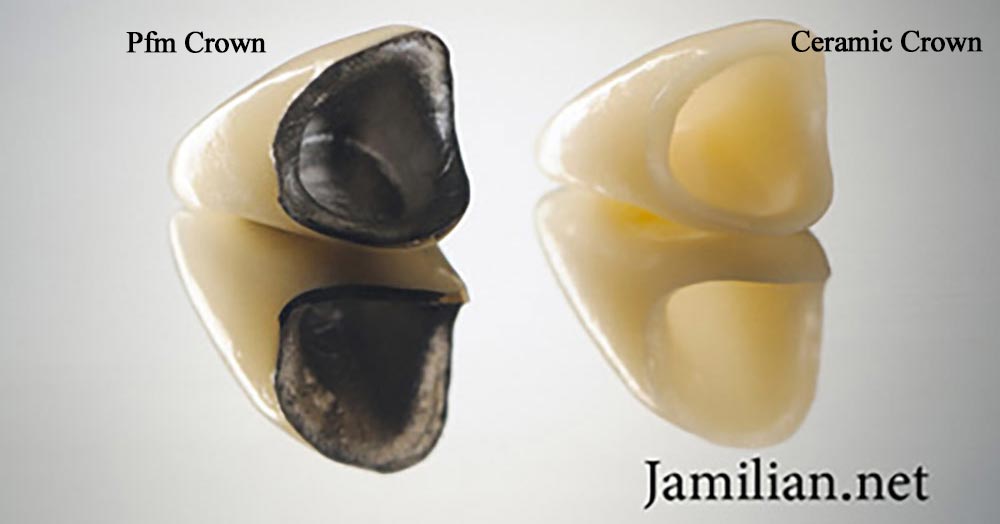
You may get a temporary crown while you wait for the permanent crown to be ready. This usually takes less than 2 weeks. While you have a temporary crown, the tooth may be sensitive to hot and cold. Avoid chewing gum and eating sticky foods during this time. If your dentist has special equipment, then you may be able to get your new crown on the same day.
When the new crown is ready, your dentist or orthodontist places it in your mouth and makes the necessary adjustments. When you and your dentist are happy with how it looks and feels, the crown is cemented into place.
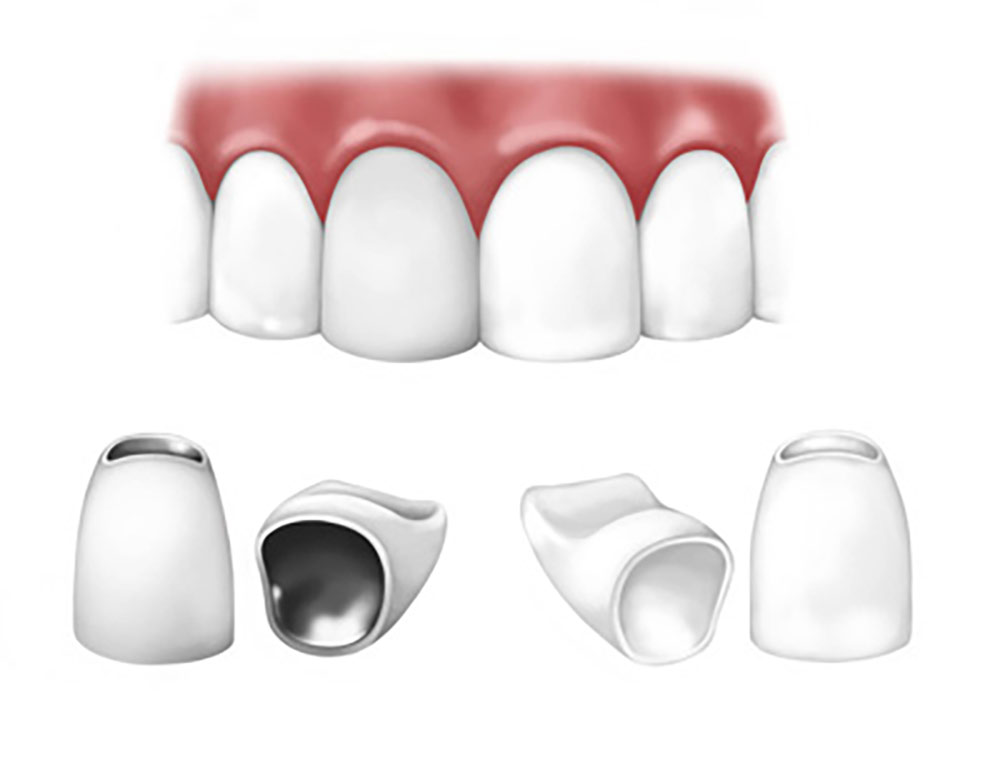
Types of dental crowns
Different kinds of materials can be used in making crowns, including:
All-Metal Crowns:
These crowns are entirely made of metal and depending on the alloy in the crown, their color may be either white or yellow. Alloys which are used in crowns include:
- High noble alloys (precious metal) : ≥25%
- Noble alloys (semiprecious metal): ≥25%
- Non-noble alloys (nonprecious metal): <25%
All-Ceramic / All-Porcelain Crowns:
They are made of different china like porcelain. This kind of dental crown has different kinds such as:
- Porcelain Jacket Crown
- Modern Porcelain Crown
- PFZ (Porcelain Fused to Zirconia) Crown
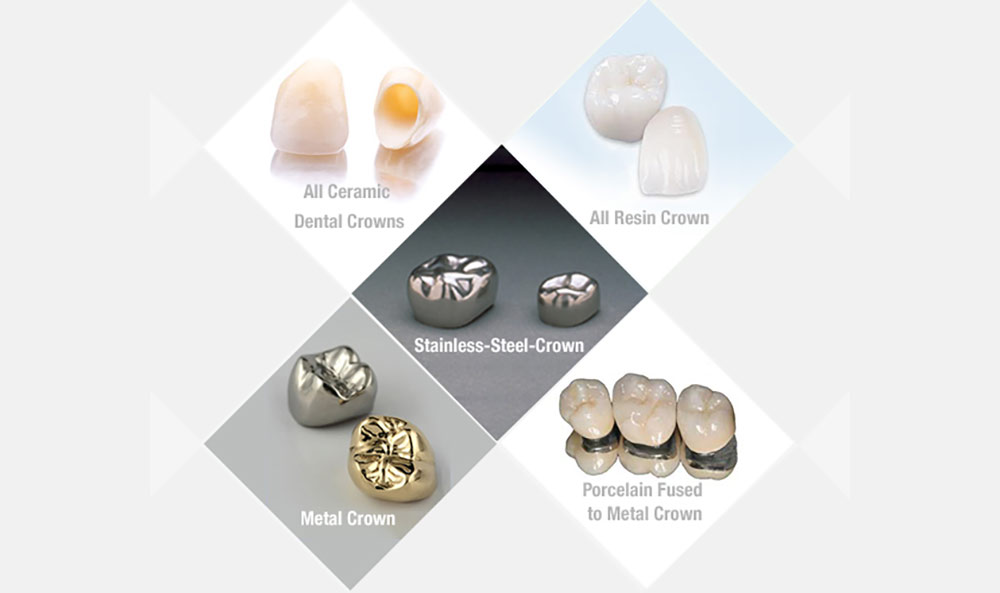
Metal-Ceramic Crowns
This kind of crown is used widely by the orthodontists nowadays. The focal core of this crown is made of metal which increases its strength and helps protect the teeth very well. However, the exterior layer is made of ceramic for aesthetic purposes. In other words, it can be concluded that a metal-ceramic crown combines the aesthetic qualities of porcelain with the strength of cast metal.
Advantages of Dental Crowns
Dental crowns involve many advantages. In general their advantages and benefits include:
- To restore an already damaged or discolored tooth
- To protect a weak tooth (for instance, from decay) from breaking or to hold together parts of a cracked tooth
- To prevent tooth cracks’ spreading out
- To restore a tooth treated with a root canal.
- To improve chewing with a broken tooth
- To improve speaking
- To increase the cosmetic modification while laughing
- To prevent a tooth decay
- To hold a dental bridge
- To be used as a dental implant
- To whiten severely discolored teeth
- To increase the teeth’s length or width
- To eliminate the gap between the teeth
- To correct the slightly crooked teeth
- Dental crowns are essential if the crown of a tooth has been damaged due to a severe decay, breaking or a week tooth as a result of a root canal.
- The most important characteristic of a dental crown is preserving the tooth structure against breaking and maintaining the health of a tooth’s surrounding tissues.

Temporary Side Effects of Dental Crowns
- Tooth sensitivity to hot or cold food
- Feeling pain while chewing food
- Sensitivity of the gums to pressure or touch
Overall, it can be said that dental crowns are believed to be a completely reliable treatment and are very unlikely to cause problems. In case you need dental crowns to repair a tooth or improve the condition of your teeth and make them more beautiful, you had better try to see an experienced and qualified dentist as soon as possible.
